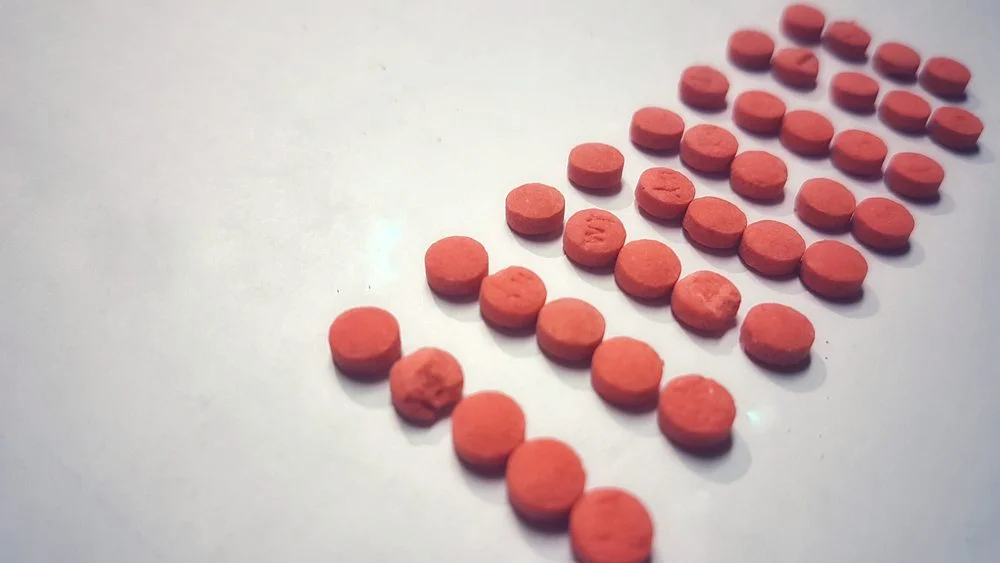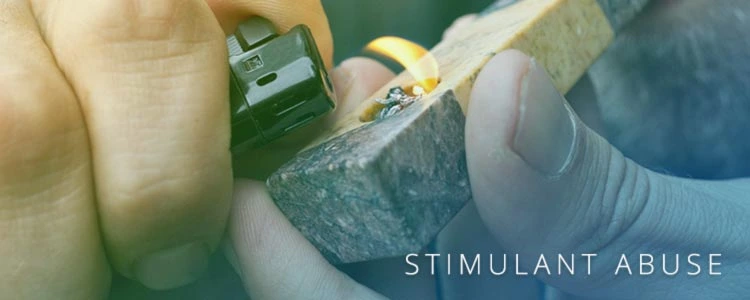Amphetamine
Amphetamines are central nervous system (CNS) stimulants used to treat attention deficit hyperactivity disorder (ADHD), narcolepsy, and obesity.

Common Brand Names: Adderall (with dextroamphetamine), Adzenys ER, Adzenys XR-ODT, Dyanavel XR, Evekeo, Evekeo ODT
Amphetamine affects its stimulant activity mainly by increasing the activity of neurotransmitters dopamine and norepinephrine in the brain. This results in faster transmission of messages between the brain and body, resulting in alertness and increased energy.
Amphetamine is classified as a Schedule II drug under the scheduling system described by the Controlled Substances Act, which means that it has a high potential for abuse and dependence.Chronic use of amphetamine can also lead to addiction.
What Is Amphetamine Used For?
Amphetamine is typically prescribed for ADHD in both adults and children, as well as narcolepsy, a sleep disorder that is characterized by extreme sleepiness during the day. Sometimes, it is also prescribed together with a low calorie diet and exercise to help obese individuals achieve a healthier weight.
Some studies have also shown that amphetamines may be helpful in improving cognition, memory, and attention in adults.
However, amphetamines are contraindicated patients with the following conditions:
- Advanced arteriosclerosis
- Agitated states
- Cardiovascular disease
- Glaucoma
- Hyperthyroidism
- Severe hypertension
- History of drug misuse
How Is Amphetamine Abused?
Amphetamine is known by a lot of street names, which include goey, speed, louee, uppers, and whiz, among others. There are many more such names for other amphetamine-type drugs.
Prescription amphetamines usually come in the form of pills and capsules, but illegal amphetamines can also come in powder, paste, crystal, or even liquid forms.
Amphetamine is abused in several ways, including the following:
- Directly swallowing tablets or capsules and taking more doses than is prescribed
- Dabbing crushed tablets or powder onto one’s gums
- Inhaling amphetamine powder through the nose (snorting)
- Dissolving amphetamine powder or tablet in water and then injecting it into a vein (shooting up)
- Smoking amphetamine
Drugs That Interact With Amphetamines
There are many drugs that can interact with amphetamines. Here’s a quick list of what to expect when this drug is used concomitantly with the following substances:
- Monoamine oxidase inhibitors: MAOI antidepressants slow down the metabolism of amphetamine, increasing the risk of hypertensive crisis and very high fever. Examples include: selegiline, phenelzine, isocarboxazid, linezolid, tranylcypromine, and methylene blue.
- Serotonergic drugs: Using amphetamine with serotonergic drugs elevates a person’s risk of developing serotonin syndrome. Examples include tricyclic antidepressants, fentanyl, tramadol, lithium, buspirone, tryptophan, and St. John’s Wort.
- Alkalinizing agents: These substances may potentiate the action of amphetamine. Examples include omeprazole and acetazolamide.
- Acidifying agents: These substances lower the concentration of amphetamine in the blood, thus also lowering its efficacy. Examples include guanethidine, glutamic acid HCl, reserpine, ascorbic acid, sodium acid phosphate, ammonium chloride, and methenamine salts.
- Tricyclic antidepressants: These substances can exacerbate the cardiovascular effects of amphetamine. Examples include: desipramine and protriptyline.
- CYP2D6 Inhibitors: These drugs also increase the patient’s risk of developing serotonin syndrome. Examples include: paroxetine, fluoxetine, quinidine, and ritonavir.
Side Effects of Amphetamine
Using amphetamine, either by misusing it or taking it as prescribed, can have adverse effects. These include:
- Dryness in the mouth
- Unpleasant taste in the mouth
- Diarrhea
- Constipation
- Upset stomach and cramps
- Nausea
- Nose bleeding
- Grinding or clenching of teeth while asleep
- Nervousness
- Painful urination
Some adverse effects of amphetamine use can be serious. Call your doctor or contact 911 if you observe any of the following symptoms in yourself or another individual:
- Dizziness
- Blurred visions
- Weakness or numbness in the limbs
- Involuntary movements
- Verbal tics
- Seeing things or hearing sounds that don’t exist (hallucination)
- Believing things that aren’t real or true
- Feeling unusually suspicious of other people
- Mania (unusually excited mood)
- Fast heartbeat
- Confusion
- Extreme muscle stiffness or twitching
- Loss of coordination
- Vomiting
- Diarrhea
- Hives, rashes, or itchiness
- Blistering or peeling of the skin
- Swollen face, eyes, lips, tongue, or throat
- Not being able to breathe or swallow properly
- Pale skin that changes to bluish or reddish hue
- Developing mysterious wounds on fingers or toes
- Seizures
Long-Term Effects of Amphetamines
Some studies have highlighted the possibility that psychosis can occur during long-term amphetamine therapy.
Other possible effects of chronic amphetamine use include weight loss and changes in sex drive.
Symptoms of Amphetamine Overdose
Amphetamine can be habit-forming. If you take higher and higher doses of amphetamine or take it more and more frequently, it can lead to overdose. This can manifest through the following symptoms:
- Confusion
- Aggressive behavior
- Restlessness
- Shaking or tremors of a part of the body
- Feeling tired or weak
- Depression
- Experiencing fast or irregular heartbeat
- Nausea and vomiting
- Diarrhea
- Stomach cramps
- Seizures
- Coma
It’s important to call 911 or emergency services immediately if you suspect that you or another individual has experienced an amphetamine overdose, especially if someone has collapsed, is having a seizure, or has lost consciousness and can’t be awakened.
Signs of Amphetamine Addiction
Patients with a stimulant use disorder may not even realize that they have one. It’s even harder for an observer to spot the signs, unless they know what to look out for.
As with all substance use disorders, medical professionals diagnose amphetamine use disorder by comparing observable symptoms against the 11 criteria detailed in the Fifth Edition of the Diagnostic and Statistical Manual of Mental Disorders (DSM-5):
- Taking amphetamine in higher doses or for longer than prescribed
- Inability to reduce or stop using amphetamine, despite the desire to do so
- Spending a lot of time recovering from the use of amphetamine, or getting and using the drug
- Constant cravings for amphetamine
- Amphetamine use results in the inability to fulfill obligations or responsibilities
- Continuing to use amphetamine despite it causing relationship problems
- Giving up important activities because of amphetamine use
- Continuing to use amphetamine even if it will put you in danger
- Continuing to use amphetamine even if it can worsen existing physical or psychological issues
- Tolerance, which means you need higher and higher doses of amphetamine to achieve the desired effects
- Developing withdrawal symptoms after suddenly stopping amphetamine use
Signs of Amphetamine Withdrawal
Using amphetamines for a prolonged period and then suddenly stopping can also result in withdrawal symptoms. These include the following:
- Strong craving for amphetamine
- Having mood swings (e.g. dysphoria, agitation, depression, and anxiety)
- Decreased ability to concentrate
- Feeling tired all day (lassitude)
- Experiencing hallucinations
- Headaches
- Body pain
- Increased appetite
- Having difficulty sleeping
The manifestation of withdrawal symptoms after abrupt cessation of amphetamine use is indicative that an individual has become dependent on the drug. You can still become dependent on amphetamine even if you’re using it as prescribed.
However, it is important to remember that dependence doesn’t necessarily equate to addiction; rather your body has simply become used to the presence of the drug. On the other hand, addiction is a disorder of the brain that is characterized by compulsive substance use despite its negative consequences.
To avoid experiencing potentially dangerous withdrawal symptoms, you need to go to your doctor or visit a medical detox facility. They can help you safely get amphetamine out of your system by creating a tapering schedule that you can follow. It will be the first step in a gradual process with the goal of eventually helping you stop using amphetamine.
Amphetamine Detoxification
The safest way to remove amphetamine from your body and prevent severe withdrawal symptoms is for you to undergo amphetamine detoxification. Such a program, performed at a medical detox facility, will be customized depending on how long you have been taking amphetamine and how severe your symptoms are. Nevertheless, you can expect the following to happen:
- Your doctor will design a tapering schedule that will gradually lower your amphetamine doses over several weeks. This will continue until such a time when your body no longer needs the drug.
- You may be given additional medications to deal with symptoms like anxiety, depression, or insomnia. Additionally, you can expect other therapeutic interventions like the provision of IV fluids and nutritional supplements to further help your body stabilize.
- Medical professionals will be around 24/7 to monitor your condition and to help you become as comfortable and as pain-free as possible during the program. They will keep track of your progress and provide the support and motivation you need to complete your detoxification from amphetamine.
Rehabilitation and Treatment for Amphetamine Addiction
One of the things you need to understand about amphetamine addiction treatment is that you need the help of medical professionals to ensure that you can overcome addiction safely and successfully, and that you can stay sober afterwards.
You usually have two options when it comes to addiction treatment: inpatient or outpatient treatment. Depending on your situation, one setup will be more effective and efficient than the other.
- Inpatient amphetamine addiction treatment: Inpatient treatment is the best option if you or your loved one has a severe case of amphetamine addiction. It’s also recommended for persons who have a high risk of non-compliance with treatment programs. In an inpatient setup, you will be required to stay in the rehabilitation facility so you can receive constant supervision from medical professionals. You’re also going to receive a more intensive combination of treatment modalities to ensure the success of your rehabilitation.
- Outpatient amphetamine addiction treatment: If you have a mild addiction case, less dangerous symptoms, and can guarantee treatment compliance, outpatient addiction treatment may be the more suitable option for you. With this kind of treatment program, you’ll be allowed to live at home and continue your usual routine, such as going to work, attending school, or fulfilling your other obligations. However, you’ll have to attend scheduled treatment sessions at your assigned facility.
Psychosocial treatment modalities like cognitive behavioral therapy, relapse prevention therapy, motivational interviewing, contingency management, and brief interventions, can be very helpful in stimulant addiction treatment.
Specifically, brief interventions have been shown to be helpful in reducing incidence of drug use and in increasing levels of abstinence in stimulant addiction patients. Brief interventions are a type of counseling that helps patients in identifying and recognizing their drug-related problems, and then motivating them to do something about these.
Find the Best Treatment Program For You
Beating drug addiction can be a challenging endeavor, but it is not impossible. There are a variety of rehabilitation centers across the United States where you can receive high-quality treatment from qualified medical professionals. You’ll also be pleased to know that many insurance policies offer some form of coverage for these addiction treatment services.
Call Better Addiction Care at (800) 429-7690 today to speak to one of our recovery support advisors. They can verify your insurance coverage for addiction treatment or help you find alternative financing options if you currently don’t have insurance. They can also help you discover the most suitable program for you or your loved one’s situation.
History of Amphetamine
Lazar Edeleanu, a doctoral student and chemist, was the first person to synthesize amphetamine in 1887. However, he abandoned his research in favor of developing a method for refining crude oil into new petroleum products. It was only in the 1930s when amphetamines would be used by doctors in the United States to treat asthma and narcolepsy.
In 1932, the amphetamine benzedrine was introduced as an over-the-counter bronchodilator for treating nasal and bronchial congestion associated with colds. Later, in World War II methamphetamine and amphetamine were given to Allied bomber pilots to fight fatigue and enhance their performance. However, the program ultimately failed because the soldiers experienced some of these drugs’ adverse effects.
Amphetamine was one of the subject drugs of the United Nations Convention on Psychotropic Substance in 1971. Today, it is a heavily regulated substance in most countries around the world.







